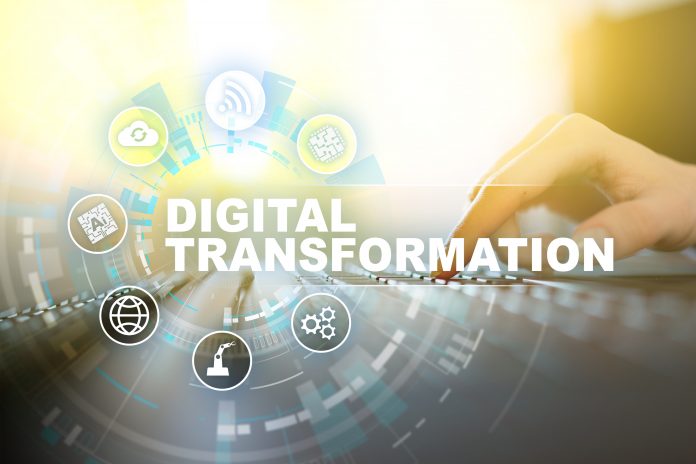Digital transformation is the process of leveraging digitisation to transform business outcomes. So, what is the difference? Jason Chester, Director of Global Channel Programs, InfinityQS, explains here
In a nutshell, digital transformation is the process of leveraging digitisation to transform business outcomes. So, what is the difference? I think that digital transformation (like so many other phrases coined by the IT industry such as Industry 4.0, big data, cloud, internet of things et al) is not the best or most accurate phrase to have been coined as it can lead to ambiguity, principally because of the word ‘digital’.
Digitisation is the conversion of manual, or analogue, information and processes to digital ones. For example, information captured on pen and paper is analogue. Converting that into a digital format such as entering it into a spreadsheet, or database, is digitisation of that analogue information. Converting an analogue signal from a machine sensor to a digital format and storing that in a computer system is digitisation.
Of course, we have been doing digitisation for decades. The difference is what we then do with that digitised data. Historically, it has been for record-keeping (sales orders, purchase orders, customer records, machine settings, quality check results, etc), or generating tabulated reports (monthly sales, budget tracking, customer demographics, quality performance reports etc).
But it is not digital transformation. Digital transformation is where the emphasis is on the second word – transforming the digital information that we have using new and emerging technologies, tools and techniques.
What makes it transformative?
Digitisation is what IT has been doing for years, and back in the day that certainly was transformative. Converting payroll processing from punch cards to computers was transformative. Converting customer records from a rolodex to a CRM system was transformative. Issuing a purchase order via EDI rather than Telex was transformative. But once digitisation became commonplace, the returns on business benefits plateaued. It became the norm, it became unspectacular.
But by digital transformation, we are not talking about incremental improvements by upgrading to a more modern CRM system, perhaps in the cloud that can be accessed remotely, or integrating payroll into larger financial management systems, or migrating from private EDI links to public networks using open standards. That march of progress happens anyway and will continue to happen in perpetuity. That is not digital transformation, that is just IT improvement, or IT evolution.
So, it continues through cycles in transformation, evolutions and maturity, and through each cycle the returns plateau as the low hanging improvement fruits are harvested and more significant gains become harder to come by. That’s until the next cycle of innovation arrives – which happens to be where we are now.
We are at a point where new and emerging technologies are converging with maturing technologies that provide access to a new wave of innovation through the ability to leverage existing digitised data with automated process in new and transformative ways.
We can now collect, store and processes vast amounts of information quickly and at low cost (thanks to cloud computing), we can collect and sense data from the physical world in real-time (thanks to low cost embedded sensors and IIoT), we can combine data from our internal data stores with external data sources (through public and open networks, protocols and standards), we can apply innovative new ways of analysing that data (thanks to advanced analytics and data visualization) and we can access those results anywhere, anytime and on any device (thanks to mobile networks and devices).
Together these things enable us to do things that we have never been able to do (either technologically, conveniently or cost-effectively) in the past. This is what is giving rise to transformative outcomes.
Being able to accurately forecast sales demand at a granular level and adapt the entire supply chain in real-time to meet that demand without the need to stockpile warehouses full of stock, can be transformative. Being able to predict variability of product quality performance in real-time through the manufacturing process and adjust those processes in real-time to minimise waste and maximise output, can be transformative.
A shift towards digital evolution?
SolarWinds MSP president John Pagliuca recently described digital transformation as “a dumb phrase”, arguing “digital evolution” is much more suitable. It could be argued that transformation is a “dumb phrase”, but for the wrong reason. Digital evolution is what we have been doing for decades. Unless, of course, you still run your company’s CRM system from Roladex. Evolution is about continuous incremental improvement but for the reasons stated above, we are at a point where new technologies, tools and techniques are enabling companies to make transformative changes to their business (or manufacturing) processes. The “dumb” bit for me is the use of the word ‘digital’ in digital transformation.
What we are really talking about is the use of intelligence to drive transformative business outcomes, either artificial intelligence, or by augmenting human workers with greater information, insight, intelligence and processes in order to amplify their own human intelligence (just as power tools augment our physical capabilities). So, I would argue the phrase “intelligent transformation” is much more suitable.
So what is it? Digital transformation or digital evolution?
The technology industry is without doubt the grandmaster at hype (and I know because I have been a part of it for almost thirty years!). That has never changed, and it never will but what starts out as hype, invariably matures and becomes mainstream over time, yet it is the same conceptually. The microchip was once hype, desktop PC’s where once hype, the internet was once hype, broadband was once hype, cloud computing was once hype. We have an innate human trait to dismiss anything as hype when it is new, when we don’t fully understand it or when we can’t see the benefit of it. Each of these get coined a name, a phrase or a three-letter acronym (now more commonly stretched to four to give us more options!). And so, the overarching moniker is then what becomes demonised.
What we need to do is to look beyond the technology. Technology is worthless. Yes, as a veteran of the technology industry, you read me correctly – technology is worthless. Technology is not what delivers business value. It is what that technology enables us to do that delivers business value. It is the capability it provides that delivers business value. It is the competitive edge that it provides that delivers business value. It is the differentiation that it enables that delivers business value.
The whole notion that companies are “taking a huge leap in the dark to “transform” their business” is a flawed notion and one that has been perpetuated by the business schools, management consultancies and indeed parts of the technology industry who have a vested interest in that notion been believed.
Let me give an example: Imagine a manufacturing company that has one production line that is continuously problematic, suffers high degrees of unpredictability and variability, produces consistently poor-quality products and as a result generates a lot of waste. It has no way to capture, monitor and analyse trends over time with various aspects of the machinery or processes, only capturing quality measurements periodically at the end of the production process. That’s a problem and it impacts business outcomes (cost, waste, customer satisfaction, profitability, market growth etc).
Now imagine that this same manufacturing company turns to modern technology, tools and techniques to monitor in real-time all aspects of the production process and correlate that with the characteristics of the product been produced. It now has the capability to automatically analyse those data streams in real-time and use modern statistical algorithms to continuously identify variation and anomalies in order to predict the adjustments that need to be made and ensure the product and the process remains in control.
After that successful initiative, it decides to apply the same approach on the next line, and the next, and then the next plant, and so on… At what point does it become ‘digital transformation’? Does digital transformation have to be ‘disruptive’ for it to qualify to be termed digital transformation? Or did they turn to new technologies, tools and techniques in order to transform business outcomes?
At the end of the day, we can call it whatever we want, but the outcome is inevitably the same.











